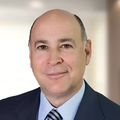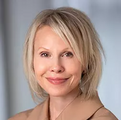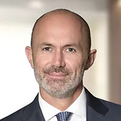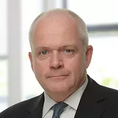BlackRock, Inc.
BlackRock, Inc. stands as a globally recognized investment management powerhouse, publicly owned and operating across a diverse range of financial markets. Its services are primarily targeted towards a broad spectrum of investors: from institutional, intermediary, and individual investors to a wider audience including pension plans, insurance companies, sovereign wealth funds, and public institutions. Its portfolio includes corporate bodies, banks, charities, foundations, and governments, showcasing a worldwide investment reach.
Beyond mere investment management, BlackRock also offers robust risk management and advisory services, adding another dimension to its comprehensive financial portfolio. It manages bespoke client portfolios focused on equity, fixed income, and balanced assets.
In the realm of investment vehicles, BlackRock exhibits an extensive array: it initiates and oversees open-end and closed-end mutual funds, offshore funds, unit trusts, as well as alternative investment vehicles such as structured funds. It is adept in launching a variety of mutual funds, including equity, fixed income, balanced, and real estate. Furthermore, it displays a strong foothold in exchange-traded funds, covering domains like equity, fixed income, balanced, currency, commodity, and multi-asset classes. Additionally, BlackRock also engages in the management of hedge funds.
When it comes to investment strategies, BlackRock has a strong presence across public equity, fixed income, real estate, currency, commodity, and alternative markets on a global scale. It diversifies its portfolio by investing in growth and value stocks of companies across different market capitalizations. The firm also pursues investment-grade municipal securities, government securities, corporate bonds, and asset-backed and mortgage-backed securities.
To ensure effective and efficient investments, BlackRock applies a combination of fundamental and quantitative analyses, using a balanced blend of bottom-up and top-down approaches. Its strategies also encompass liquidity, asset allocation, real estate, and alternative investment. In the real estate sector, it shows a particular interest in markets like Poland and Germany.
In terms of performance evaluation, BlackRock benchmarks its portfolios against well-established indices like S&P, Russell, Barclays, MSCI, Citigroup, and Merrill Lynch.
Founded in 1988 and headquartered in New York City, BlackRock extends its global footprint with additional offices in key cities worldwide such as Boston, London, Gurgaon, Hong Kong, Greenwich, Princeton, Edinburgh, Sydney, Taipei, Singapore, Sao Paulo, Philadelphia, Washington DC, Toronto, Wilmington, and San Francisco.
Company Overview edit edit source
Segments and Products edit edit source
BlackRock’s diverse platform of alpha-seeking active, index and cash management investment strategies across asset classes enables the Company to offer choice and tailor investment outcomes and asset allocation solutions for clients. Product offerings include single- and multiasset portfolios investing in equities, fixed income, alternatives and money market instruments. Products are offered directly and through intermediaries in a variety of vehicles, including open-end and closed-end mutual funds, iShares® and BlackRock exchange-traded funds (“ETFs”), separate accounts, collective trust funds and other pooled investment vehicles. BlackRock also offers technology services, including the investment and risk management technology platform, Aladdin®, Aladdin Wealth, eFront, and Cachematrix, as well as advisory services and solutions to a broad base of institutional and wealth management clients.
EFTs edit edit source
BlackRock is the leading ETF provider in the world with $2.9 trillion of AUM at December 31, 2022, and generated net inflows of $220 billion in 2022. The majority of ETF AUM and net inflows represent the Company’s index-tracking iSharesbranded ETFs. The Company also offers a select number of active BlackRock-branded ETFs that seek outperformance and/or differentiated outcomes. Record fixed income ETF net inflows of $123 billion were diversified across exposures, led by flows into treasury, investment grade, and municipal ETFs. Equity ETF net inflows of $101 billion were driven by flows into core, sustainable and thematic ETFs, as well as continued client use of BlackRock’s broad-based precision exposure ETFs to express risk preferences and make tactical allocation changes during the year. Multi-asset ETFs saw net inflows of $1 billion, while alternative ETFs had net outflows of $5 billion, primarily driven by commodities funds. ETFs represented 37% of long-term AUM at December 31, 2022 and 42% of long-term base fees and securities lending revenue for 2022.
Equity edit edit source
Year-end 2022 equity AUM totalled $4.4 trillion, reflecting net inflows of $105 billion. Net inflows included $101 billion and $7 billion into ETFs and non-ETF index, respectively, partially offset by active net outflows of $3 billion. BlackRock’s effective fee rates fluctuate due to changes in AUM mix. Approximately half of BlackRock’s equity AUM is tied to international markets, including emerging markets, which tend to have higher fee rates than US equity strategies. Accordingly, fluctuations in international equity markets, which may not consistently move in tandem with US markets, have a greater impact on BlackRock’s equity revenues and effective fee rate. Equity represented 56% of long-term AUM and 52% of long-term base fees and securities lending revenue for 2022.
Fixed Income edit edit source
Fixed income AUM ended 2022 at $2.6 trillion, reflecting net inflows of $250 billion. Net inflows included $123 billion, $93 billion and $34 billion into ETFs, active and non-ETF index, respectively. Record fixed income ETF net inflows of $123 billion reflected the benefit of our diverse product offering and included strong flows into treasury, investment grade and municipal ETFs. Active fixed income net inflows included the funding of a significant insurance client outsourcing mandate. Fixed income represented 32% of long-term AUM and 26% of long-term base fees and securities lending revenue for 2022.
Multi-Asset edit edit source
Multi-asset represented 9% of long-term AUM and 10% of long-term base fees and securities lending revenue for 2022.
Multi-asset net inflows reflected ongoing institutional demand for our solutions-based advice with $33 billion of net inflows coming from institutional clients. Defined contribution plans of clients remained a significant driver of flows and contributed $19 billion to institutional multiasset net inflows in 2022, primarily into target date and target risk product offerings. The Company’s multi-asset strategies include the following:
• Target date and target risk products generated net inflows of $24 billion. Institutional investors represented 89% of target date and target risk AUM, with defined contribution plans representing 84% of AUM. Flows were driven by defined contribution investments in our LifePath offerings. LifePath products utilize a proprietary active asset allocation overlay model that seeks to balance risk and return over an investment horizon based on the investor’s expected retirement timing. Underlying investments are primarily index products.
• Asset allocation and balanced products generated $6 billion of net inflows. These strategies combine equity, fixed income and alternative components for investors seeking a tailored solution relative to a specific benchmark and within a risk budget. In certain cases, these strategies seek to minimize downside risk through diversification, derivatives strategies and tactical asset allocation decisions. Flagship products include our Global Allocation and Multi-Asset Income fund families.
• Fiduciary management services are complex mandates in which pension plan sponsors or endowments and foundations retain BlackRock to assume responsibility for some or all aspects of investment management, often with BlackRock acting as outsourced chief investment officer. These customized services require strong partnership with the clients’ investment staff and trustees in order to tailor investment strategies to meet client-specific risk budgets and return objectives
Alternatives edit edit source
BlackRock alternatives focus on sourcing and managing high-alpha investments with lower correlation to public markets and developing a holistic approach to address client needs in alternatives investing. Our alternatives products fall into three main categories — (1) illiquid alternatives, (2) liquid alternatives, and (3) currency and commodities. Illiquid alternatives include offerings in alternative solutions, private equity, opportunistic and credit, real estate and infrastructure. Liquid alternatives include offerings in direct hedge funds and hedge fund solutions (funds of funds). In 2022, liquid and illiquid alternatives generated a combined $14 billion of net inflows, or $28 billion excluding return of capital/investment of $14 billion. The largest contributors to return of capital/investment were opportunistic and credit strategies, private equity solutions and infrastructure. Net inflows were driven by opportunistic and credit strategies, infrastructure and private equity. At year-end, BlackRock had approximately $34 billion of non-fee paying, unfunded, uninvested commitments, which are expected to be deployed in future years; these commitments are not included in AUM or flows until they are fee-paying. Currency and commodities saw $7 billion of net outflows, primarily from commodities ETFs and institutional separate accounts. BlackRock believes that as alternatives become more conventional and investors adapt their asset allocation strategies, investors will further increase their use of alternative investments to complement core holdings. BlackRock’s highly diversified alternatives franchise is well positioned to continue to meet growing demand from both institutional and retail investors. Alternatives represented 3% of long-term AUM and 12% of long-term base fees and securities lending revenue for 2022.
Illiquid Alternatives edit edit source
The Company’s illiquid alternatives strategies include the following:
• Alternative Solutions represents highly customized portfolios of alternative investments. In 2022, alternative solutions portfolios had $7 billion in AUM, and $895 million of net inflows.
• Private Equity and Opportunistic included AUM of $25 billion in opportunistic and credit offerings, $22 billion in private equity solutions, and $7 billion in Long Term Private Capital (“LTPC”). Net inflows of $9 billion into private equity and opportunistic strategies included $6 billion of net inflows into opportunistic and credit offerings, $2 billion of net inflows into private equity solutions and $844 million of net inflows into LTPC.
• Real Assets which includes infrastructure and real estate, totalled $58 billion in AUM, reflecting net inflows of $6 billion, led by infrastructure
Liquid Alternatives edit edit source
The Company’s liquid alternatives products’ net outflows of $2 billion reflected net outflows from direct hedge fund strategies. Direct hedge fund strategies includes a variety of single- and multi-strategy offerings. In addition, the Company manages $86 billion in liquid credit strategies which is included in active fixed income.
Currency and Commodities edit edit source
The Company’s currency and commodities products include a range of active and index products. Currency and commodities products had $7 billion of net outflows, primarily driven by ETFs and institutional separate accounts. ETF commodities products represented $61 billion of AUM and are not eligible for performance fees.
Cash Management edit edit source
Cash management AUM totaled $671 billion at December 31, 2022, reflecting $77 billion of net outflows, primarily due to institutional client redemptions from US government money market funds. Cash management products include taxable and tax-exempt money market funds, short-term investment funds and customized separate accounts. Portfolios are denominated in US dollars, Canadian dollars, Australian dollars, Euros, Swiss Francs, New Zealand dollars or British pounds. During 2022 BlackRock voluntarily waived a portion of its management fees on certain money market funds to ensure that they maintain a minimum level of daily net investment income. These waivers resulted in a reduction of management fees of approximately $72 million, which was partially offset by a reduction of BlackRock’s distribution and servicing costs paid to financial intermediaries. These waivers ceased following rate hikes by the Bank of England and the US Federal Reserve in March 2022.
History edit edit source
BlackRock, Inc. has evolved into a powerhouse of the global investment management industry, with a rich history dating back to its founding in 1988. Established as Blackstone Financial Management, LLC, the firm underwent significant changes over the years, leading to its transformation into BlackRock, one of the world's largest and most respected investment management companies.
Founding and Early Growth
BlackRock was born out of the visionary leadership of Larry Fink and his team, who recognized the potential for a specialized fixed-income asset management business. In 1988, they approached The Blackstone Group, a leading private equity and financial services firm, with a compelling proposal. They managed to secure $5 million in seed capital from Blackstone's partners to launch their venture, initially operating under the name Blackstone Financial Management, LLC.
Rise to Prominence
Under Larry Fink's guidance, Blackstone Financial Management quickly gained recognition for its expertise in managing fixed-income assets. The firm's commitment to delivering value to clients and its disciplined investment approach attracted a growing client base.
Independence and Name Change
In 1992, BlackRock's management saw an opportunity to further expand and diversify the business. They negotiated a buyout from The Blackstone Group, gaining independence as a separate entity. This pivotal moment marked the beginning of a new era for the company, and to avoid confusion with its former parent company, the name was changed to "BlackRock, Inc."
Expansion and IPO
With its newfound independence, BlackRock set its sights on expansion. The firm focused on diversifying its investment offerings beyond fixed-income assets, branching out into equities and other asset classes. This strategic expansion allowed BlackRock to cater to a broader range of clients with varying investment needs.
In 1999, BlackRock took a major step forward by going public and listing its shares on the New York Stock Exchange (NYSE) under the ticker symbol "BLK." The initial public offering (IPO) brought heightened visibility and access to additional capital, enabling the company to fuel its growth trajectory.
Acquisitions and Industry Leadership
Embracing a strategy of both organic growth and strategic acquisitions, BlackRock continued to solidify its position as a leading investment management firm. Notable among its acquisitions was the 2006 purchase of Merrill Lynch Investment Managers (MLIM) from Merrill Lynch & Co., Inc. This transformative deal significantly expanded BlackRock's assets under management (AUM) and market reach.
In 2009, BlackRock made another monumental move, acquiring Barclays Global Investors (BGI), the asset management division of Barclays PLC. The acquisition, valued at approximately $13.5 billion, made BlackRock one of the world's largest investment management companies, further bolstering its presence in the ETF market.
Diversification and Innovation
BlackRock's journey has been characterized by a commitment to innovation and a proactive response to changing market dynamics. The company has continuously sought to meet the evolving needs of investors by expanding its product offerings, embracing technology, and leading the way in environmental, social, and governance (ESG) investing.
Global Impact and Leadership
Today, BlackRock stands as a global leader in investment management, serving a diverse client base that includes governments, corporations, pension funds, foundations, and individual investors across continents. The company's impact on the financial industry is substantial, and its voice carries significant weight in global financial matters.
Team edit edit source
The Global Executive Committee edit edit source

Larry Fink - Chairman and Chief Executive Officer edit edit source
Laurence D. Fink is one of the seven founders of BlackRock, and has been a large influence in its leadership since ints foundation in 1988. Prior to founding BlackRock he earned an MBA at the University of Los Angeles in 1976 and a BA from UCLA in 1974 and worked for The First Boston Corporation, an investment bank, being part of its management committee and a managing director. Additionally he is currently a member of a number of associations, including the Board of Trustees of New York University (NYU), the World Economic Forum, the board of the council of foreign relations, the advisory board of the Tsinghua University School of Economics and Management in Beijing and on the Executive Committee of the Partnership for New York City.
Rob Kapito - President edit edit source

Rob Kapito is also one of the seven founders of BlackRock in 1988. Since 2007 he has been part of BlackRocks Global Executive Committee, Chairman of the Global Operating Committee and Director and President of BlackRock. Prior to founding BlackRock he achieved a bachelor in economics at the Wharton School of the University of Pennsylvania in 1979 and an MBA from Harvard Business School in 1983. Furthermore he served as Vice President in the Mortgage Products Group at The First Boston Corporation before co-founding BlackRock. He is member of many associations, including being the President of the Board of Directors for the Hope & Heroes Children's Cancer Fund, recipient of the 2009 Joseph Wharton Leadership Award and the Marine Corps-Law Enforcement Foundation's 2010 Semper Fidelis Award.

Joud Abdel Majeid - Global Head of Investment Stewardship edit edit source
Joud Abdel Majeid is Global Head of Investment Stewardship for BlackRock, a Senior Managing Director and a member of BlackRock's Global Executive Committee. Prior to joining BlackRock in 2017, Ms Abdel earned a bachelor's degree in finance and economics from Elmhurst College and an MBA from Kellogg School of Management at Northwestern. Additionally she has previously worked as a management consultant at Booz & Company and Head of Strategy and Corporate Development at E*TRADE Financial.

Lance Braunstein - Head of Aladdin Engineering edit edit source
Lance is Head of Aladdin Engineering, a member of the BlackRock Global Executive Committee and a senior managing Director for BlackRock. Before joining BlackRock Lance achieved a BA in mathematics at the University of Rochester, a MS in Atmospheric Science at Colorado State University and an MBA from the University of Pennsylvania. Previously he as worked as CIO at E*TRADE and CIO at OptionsHouse, which was acquired by E*TRADE in 2016. Additionally he has worked for a total of 19 years at Morgan Stanley and Goldman Sachs.

Susan Chan - Head of Greater China edit edit source
Susan is Head of Greater China, Senior Managing Director, Deputy Head of Asia Pacific, Head of Trading, Liquidity and Lending Asia Pacific and a member of BlackRock's Global Executive Committee. She is responsible for BlackRocks investments, products and greater business in China, Hong Kong and Taiwan. Prior to working at BlackRock she graduated at Boston University and worked as Managing Director at Deutsche Bank AG, Hong Kong and as Managing Director at Barclays Capital Asia Limited where she held various leadership positions.
Samara Cohen - Chief Investment Officer of ETF and Index Investments edit edit source

Samara is BlackRocks chief Investment Officer of ETF and Index Investments business, leading a team which seeks to lead in the modernisation of the index industry and ETF markets, including risk managers, platform architects, product operating model designers, platform architects and portfolio managers. Before joining BlackRock Samara earned a bachelors in Finance from Wharton School, a bachelors in Theatre Arts from the College of Arts and Sciences of the University of Pennsylvania and an MBA from Harvard Business School. She has previously worked as Chief Operating Officer of Fixed Income, Currencies and Commodities Americas Sales and the led the Global Market Transition team. She has also worked at Goldman Sachs.

Stephen Cohen - Head of Europe, Middle East and Africa edit edit source
Stephen is Head of Europe, Middle East and Africa, chairs the EMEA Executive Committee and is member of the BlackRock's Global Executive Committee. Prior Stephen earned a First Class honours degree in Economics from the University of Southampton in 1996. Before joining BlackRock in 2011, he was Global Head of Equity Linked Strategy at Nomura, and has also worked at ING Barings. Stephen started his career working in fixed income at the Union Bank of Switzerland (UBS) in 1996.

Edwin Conway - Global Head of Equity Private Markets edit edit source
Edwin N. Conway was been named Global Head of EPM in 2023, is Senior Managing Director and a member of BlackRocks Global Executive Committee. He is responsible for direct private equity, infrastructure, real estate and secondaries. Prior to joining BlackRock Edwin earned a bachelors from the University College Dublin, worked as Executive Director at Arden Asset Management, Inc., Director at Credit Suisse Asset Management and Senior Managing Director at The Blackstone Group.
Edward Fishwick - Chief Risk Officer and Head of the Risk and Quantitative Analysis edit edit source

Edward J. Fishwick is responsible for BlackRock's investment and enterprise risk. He is Chief Risk officer, chair of BlackRock's Enterprise Risk Management Committee and a member of the Global Executive Committee. Prior, Ed earned a BA in Economics from the University of Liverpool and studied postgraduate economics at the University of Cambridge. He has worked in a variety of positions, including Head of Risk Management and Investment Process Research at AXA Investment Managers, Head of Research at Franklin Portfolio Managers in Boston and Merrill Lynch Investment Management prior to it getting acquired by BlackRock in 2006.

Robert Goldstein - Chief Operating Officer edit edit source
Mr. Goldstein is BlackRock's Chief Operating Officer, a Senior Managing Director, co-chair of the Global Operating Committee and a member of the Global Executive Committee. He has worked at BlackRock for more than 20 years, starting as analyst in BlackRock's Portfolio Analytics Group in 1994, and being instrumental in developing BlackRock's processes and capabilities. Previously he earned a bachelors degree in economics from the Binghamton University in 1994. He has twice been named to Fortune's "40 under 40" list.
Company Valuation edit edit source
| DCF Assumptions & Output: | |||||||||||||
| Company Name: | BlackRock | Terminal Value - Multiples Method: | Terminal Value - Perpetuity Growth Method: | ||||||||||
| Ticker: | BLK | ||||||||||||
| Current Share Price: | $ 745.74 | Median TEV / EBITDA of Comps: | 14.0 x | Expected Long-Term GDP Growth: | 1.80% | ||||||||
| Baseline Terminal EBITDA Multiple: | 17.4 x | Baseline Terminal FCF Growth Rate: | 0.75% | ||||||||||
| Discount Rate (WACC): | 10.10% | ||||||||||||
| Effective Tax Rate: | 22.0% | Baseline Terminal Value: | $ 192,588 | Baseline Terminal Value: | $ 192,875 | ||||||||
| Last Fiscal Year: | 2022-01-31 | Implied Terminal FCF Growth Rate: | 0.74% | Implied Terminal EBITDA Multiple: | 17.4 x | ||||||||
| Current Equity Value: | $ 38,785 | (+) PV of Terminal Value: | 119,034 | (+) PV of Terminal Value: | 119,212 | ||||||||
| (-) Cash & Cash-Equivalents: | (7,416) | (+) Sum of PV of Free Cash Flows: | 52,417 | (+) Sum of PV of Free Cash Flows: | 52,417 | ||||||||
| (-) Equity Investments: | (533) | Implied Enterprise Value: | 171,451 | Implied Enterprise Value: | 171,628 | ||||||||
| (-) Other Non-Core Assets, Net: | - | ||||||||||||
| (-) Net Operating Losses: | (6,350) | % of Implied TEV from Terminal Value: | 69.4% | % of Implied TEV from Terminal Value: | 69.5% | ||||||||
| (+) Total Debt & Finance Leases: | 8,492 | ||||||||||||
| (+) Preferred Stock: | - | (+) Cash & Cash-Equivalents: | 7,416 | (+) Cash & Cash-Equivalents: | 7,416 | ||||||||
| (+) Noncontrolling Interests: | 1,041 | (+) Equity Investments: | 533 | (+) Equity Investments: | 533 | ||||||||
| (+) Unfunded Pension Obligations: | - | (+) Other Non-Core Assets, Net: | - | (+) Other Non-Core Assets, Net: | - | ||||||||
| Current Enterprise Value: | $ 34,019 | (+) Net Operating Losses: | 6,350 | (+) Net Operating Losses: | 6,350 | ||||||||
| (-) Total Debt & Capital Leases: | (8,492) | (-) Total Debt: | (8,492) | ||||||||||
| (-) Preferred Stock: | - | (-) Preferred Stock: | - | ||||||||||
| (-) Noncontrolling Interests: | (1,041) | (-) Noncontrolling Interests: | (1,041) | ||||||||||
| (-) Unfunded Pension Obligations: | - | (-) Unfunded Pension Obligations: | - | ||||||||||
| Implied Equity Value: | 176,217 | Implied Equity Value: | 176,394 | ||||||||||
| Diluted Shares Outstanding: | 150.2 | Diluted Shares Outstanding: | 150.2 | ||||||||||
| Implied Share Price from DCF: | $ 1,173.21 | Implied Share Price from DCF: | $ 1,174.40 | ||||||||||
| Premium / (Discount) to Current: | 57.3% | Premium / (Discount) to Current: | 57.5% | ||||||||||
| Historical: | Projected: | ||||||||||
| Unlevered Free Cash Flow Projections: | Units: | FY19 | FY20 | FY21 | FY22 | FY23 | FY24 | FY25 | FY26 | FY27 | |
| AUM: | M | 7,429,633 | 8,676,680 | 10,010,143 | 8,594,485 | 9,275,739 | 10,017,557 | 10,825,699 | 11,563,964 | 12,356,733 | |
| Equity | M | 3,820,329 | 4,419,806 | 5,342,360 | 4,435,354 | 4,878,889 | 5,366,778 | 5,903,456 | 6,375,733 | 6,885,791 | |
| Growth Rate: | % | N/A | 15.7% | 20.9% | (17.0%) | 10.0% | 10.0% | 10.0% | 8.0% | 8.0% | |
| Fixed Income | M | 2,315,392 | 2,674,488 | 2,822,041 | 2,536,823 | 2,638,296 | 2,743,828 | 2,853,581 | 2,967,724 | 3,086,433 | |
| Growth Rate: | % | N/A | 15.5% | 5.5% | (10.1%) | 4.0% | 4.0% | 4.0% | 4.0% | 4.0% | |
| Multi-asset | M | 568,121 | 658,733 | 816,494 | 684,904 | 732,847 | 784,147 | 839,037 | 880,989 | 925,038 | |
| Growth Rate: | % | N/A | 15.9% | 23.9% | (16.1%) | 7.0% | 7.0% | 7.0% | 5.0% | 5.0% | |
| Alternatives | M | 178,072 | 235,042 | 264,881 | 266,210 | 300,817 | 339,924 | 384,114 | 426,366 | 473,266 | |
| Growth Rate: | % | N/A | 32.0% | 12.7% | 0.5% | 13.0% | 13.0% | 13.0% | 11.0% | 11.0% | |
| Cash Management | M | 545,949 | 666,252 | 755,057 | 671,194 | 724,890 | 782,881 | 845,511 | 913,152 | 986,204 | |
| Growth Rate: | % | N/A | 22.0% | 13.3% | (11.1%) | 8.0% | 8.0% | 8.0% | 8.0% | 8.0% | |
| Fees (For given AUM Performance) | Rev $ / AUM $ | 0.159% | 0.146% | 0.152% | 0.168% | 0.173% | 0.179% | 0.185% | 0.192% | 0.198% | |
| Fees % on Equity; | Rev $ / AUM $ | 0.150% | 0.133% | 0.150% | 0.162% | 0.167% | 0.172% | 0.177% | 0.183% | 0.188% | |
| Growth Rate: | % | N/A | (10.8%) | 12.2% | 8.4% | 3.0% | 3.0% | 3.0% | 3.0% | 3.0% | |
| Fees % on Fixed Income; | Rev $ / AUM $ | 0.119% | 0.133% | 0.146% | 0.135% | 0.139% | 0.143% | 0.147% | 0.152% | 0.156% | |
| Growth Rate: | % | N/A | 11.8% | 9.3% | (7.5%) | 3.0% | 3.0% | 3.0% | 3.0% | 3.0% | |
| Fees % on Multi-asset | Rev $ / AUM $ | 0.202% | 0.177% | 0.173% | 0.190% | 0.195% | 0.201% | 0.207% | 0.213% | 0.220% | |
| Growth Rate: | % | N/A | (12.6%) | (1.9%) | 9.5% | 3.0% | 3.0% | 3.0% | 3.0% | 3.0% | |
| Fees % on Alternatives; | Rev $ / AUM $ | 0.567% | 0.531% | 0.571% | 0.597% | 0.609% | 0.621% | 0.634% | 0.647% | 0.659% | |
| Growth Rate: | % | N/A | (6.4%) | 7.7% | 4.6% | 2.0% | 2.0% | 2.0% | 2.0% | 2.0% | |
| Fees % on Cash Management; | Rev $ / AUM $ | 0.113% | 0.119% | 0.062% | 0.129% | 0.134% | 0.139% | 0.145% | 0.151% | 0.157% | |
| Growth Rate: | % | N/A | 4.7% | (47.5%) | 106.8% | 4.0% | 4.0% | 4.0% | 4.0% | 4.0% | |
| COGS and OpEx per AUM: | $ / AUM $ | 0.001210 | 0.001211 | 0.001191 | 0.001336 | 0.001403 | 0.001473 | 0.001547 | 0.001624 | 0.001705 | |
| Growth Rate: | % | N/A | 0.1% | (1.6%) | 12.2% | 5.0% | 5.0% | 5.0% | 5.0% | 5.0% | |
| Maintenance CapEx per AUM: | $ / AUM $ | 0.0000342 | 0.0000224 | 0.0000341 | 0.0000620 | 0.0000992 | 0.0001588 | 0.0002540 | 0.0004064 | 0.0006503 | |
| Growth Rate: | % | N/A | (34.6%) | 52.4% | 82.1% | 60.0% | 60.0% | 60.0% | 60.0% | 60.0% | |
| D&A per AUM: | $ / AUM $ | 0.00003984 | 0.00004126 | 0.00004146 | 0.00004864 | 0.00005107 | 0.00005362 | 0.00005630 | 0.00005912 | 0.00006207 | |
| Growth Rate: | % | N/A | 3.6% | 0.5% | 17.3% | 5.0% | 5.0% | 5.0% | 5.0% | 5.0% | |
| Growth CapEx per New AUM: | $ / AUM $ | 0.00029 | 0.000299 | 0.000308 | 0.000315 | 0.000323 | |||||
| Growth Rate: | % | 3.0% | 3.0% | 2.5% | 2.5% | ||||||
| Tech and Advisory Services Growth Rate: | % | 29.1% | 15.4% | (16.8%) | 15.0% | 15.0% | 15.0% | 15.0% | 15.0% | 15.0% | |
| Revenue: | |||||||||||
| (+) Equity Sales | $ M | $ 5,716 | $ 5,900 | $ 8,000 | $ 7,203 | $ 8,161 | $ 9,246 | $ 10,476 | $ 11,654 | $ 12,964 | |
| (+) Fixed Income Sales | $ M | $ 3,286 | $ 3,539 | $ 3,863 | $ 3,495 | $ 3,666 | $ 3,927 | $ 4,206 | $ 4,506 | $ 4,827 | |
| (+) Multi-asset Sales | $ M | $ 1,148 | $ 1,163 | $ 1,414 | $ 1,299 | $ 1,432 | $ 1,578 | $ 1,739 | $ 1,881 | $ 2,034 | |
| (+) Alternatives Sales | $ M | $ 1,009 | $ 1,247 | $ 1,513 | $ 1,590 | $ 1,833 | $ 2,112 | $ 2,435 | $ 2,756 | $ 3,121 | |
| (+) Cash Managment Sales | $ M | $ 618 | $ 790 | $ 470 | $ 864 | $ 970 | $ 1,090 | $ 1,224 | $ 1,375 | $ 1,545 | |
| (+) Net Sales: | $ M | $ 11,777 | $ 12,639 | $ 15,260 | $ 14,451 | $ 16,061 | $ 17,953 | $ 20,080 | $ 22,172 | $ 24,489 | |
| (+) Tech and Advisory Services: | $ M | 2,762 | 3,566 | 4,114 | 3,422 | 3,935 | 4,526 | 5,204 | 5,985 | 6,883 | |
| Total Revenue: | $ M | 14,539 | 16,205 | 19,374 | 17,873 | 19,997 | 22,479 | 25,285 | 28,157 | 31,372 | |
| Revenue Growth: | % | N/A | 11.5% | 19.6% | (7.7%) | 11.9% | 12.4% | 12.5% | 11.4% | 11.4% | |
| Operating Income (EBIT): | $ M | 5,550 | 5,700 | 7,450 | 6,390 | 6,984 | 7,722 | 8,541 | 9,377 | 10,301 | |
| Operating (EBIT) Margin: | % | 38.2% | 35.2% | 38.5% | 35.8% | 34.9% | 34.4% | 33.8% | 33.3% | 32.8% | |
| (-) Taxes, Excluding Effect of Interest: | $ M | (1,221) | (1,254) | (1,639) | (1,406) | (1,536) | (1,699) | (1,879) | (2,063) | (2,266) | |
| Net Operating Profit After Tax (NOPAT): | $ M | 4,329 | 4,446 | 5,811 | 4,984 | 5,447 | 6,024 | 6,662 | 7,314 | 8,035 | |
| Adjustments for Non-Cash Charges: | |||||||||||
| (+) Depreciation & Amortization: | $ M | 296 | 358 | 415 | 418 | 474 | 537 | 610 | 684 | 767 | |
| % Revenue: | % | 2.0% | 2.2% | 2.1% | 2.3% | 2.4% | 2.4% | 2.4% | 2.4% | 2.4% | |
| (+/-) Deferred Taxes: | $ M | 796 | 1,028 | 2,369 | 1,635 | 1,536 | 1,699 | 1,879 | 2,063 | 2,266 | |
| % Book Taxes: | % | 65.2% | 82.0% | 144.5% | 116.3% | 100.0% | 100.0% | 100.0% | 100.0% | 100.0% | |
| (+/-) Other Operating Activities: | $ M | 1,243 | 1,331 | 1,450 | 1,527 | 1,616 | 1,816 | 2,043 | 2,275 | 2,535 | |
| % Revenue: | % | 8.5% | 8.2% | 7.5% | 8.5% | 8.1% | 8.1% | 8.1% | 8.1% | 8.1% | |
| Change in Working Capital: | |||||||||||
| Accounts Receivable: | $ M | 3,179 | 3,535 | 3,789 | 3,264 | ||||||
| Accounts Payable: | $ M | (1,167) | (1,028) | (1,379) | (1,294) | ||||||
| (+/-) Change in Working Capital: | $ M | 2,012 | 2,507 | 2,410 | 1,970 | 2,364 | 2,837 | 3,404 | 4,085 | 4,902 | |
| % Change in Revenue: | % | N/A | 150.5% | 76.0% | (131.2%) | 120.0% | 120.0% | 120.0% | 120.0% | 120.0% | |
| (-) Capital Expenditures: | $ M | (254) | (194) | (341) | (533) | (549) | (564) | (578) | (591) | (604) | |
| % Revenue: | % | 1.7% | 1.2% | 1.8% | 3.0% | 2.7% | 2.5% | 2.3% | 2.1% | 1.9% | |
| Annual Unlevered Free Cash Flow: | $ M | 8,422 | 9,476 | 12,114 | 10,001 | 10,888 | 12,349 | 14,019 | 15,829 | 17,902 | |
| Growth Rate: | % | N/A | 12.5% | 27.8% | (17.4%) | 8.9% | 13.4% | 13.5% | 12.9% | 13.1% | |
| Period: | # | 1 | 2 | 3 | 4 | 5 | |||||
| PV of Unlevered FCF: | $ M | 9,889 | 10,187 | 10,504 | 10,772 | 11,065 | |||||
| EBITDA: | $ M | $ 5,846 | $ 6,058 | $ 7,865 | $ 6,808 | $ 7,457 | $ 8,260 | $ 9,150 | $ 10,060 | $ 11,068 | |
| Growth Rate: | % | N/A | N/A | 29.8% | (13.4%) | 9.5% | 10.8% | 10.8% | 9.9% | 10.0% | |
| Discount Rate Calculations - Assumptions: | |||||||
| Risk-Free Rate: | 3.90% | ||||||
| Equity Risk Premium: | 5.00% | ||||||
| Pre-Tax Cost of Debt: | 3.73% | ||||||
| Cost of Preferred Stock: | – | ||||||
| Debt | % Debt | Stock | % Preferred | Equity | % Equity | Beta | |
| Current Capital Structure: | $ 1,073 | 2.7% | $ - | – | $ 38,785 | 97.3% | 1.28 |
| Cost of Equity Based on Historical Beta: | 10.30% | ||||||
| WACC, Current Capital Structure: | 10.10% | ||||||
Ratios edit edit source
| Mkt Cap (USD) | BF P/E | BF EV/EBITDA | BF EV/EBIT | BF EV/Rev | LF P/BV | |
| BlackRock | 109.89B | 19.1x | 14.4x | 15.5x | 5.9x | 2.9x |
| Mean from Comps | 8.94B | 12.3x | 8.7x | 9.7x | 3.2x | 2.1x |
Competition edit edit source
- Vanguard Group: Vanguard is one of the world's largest investment management companies, known for its low-cost index funds and exchange-traded funds (ETFs). It competes with BlackRock in the passive investing space.
- State Street Global Advisors (SSGA): SSGA is another prominent asset management firm, offering a variety of investment strategies, including ETFs and active funds. It is a significant player in the institutional investor market and often competes with BlackRock for institutional mandates.
- Fidelity Investments: Fidelity is a well-known financial services company offering various investment products, retirement planning, and brokerage services. It competes with BlackRock in both active and passive investment segments.
- JPMorgan Asset Management: JPMorgan's asset management arm offers a diverse range of investment solutions to institutional and retail clients. It competes with BlackRock in various investment categories, such as mutual funds and alternative investments.
- PIMCO (Pacific Investment Management Company): PIMCO is a global investment management firm that specializes in fixed-income strategies. It competes with BlackRock in the bond and fixed-income markets.
- Goldman Sachs Asset Management (GSAM): GSAM provides a wide range of investment products and services to institutional and individual clients. It competes with BlackRock in various asset management and alternative investment offerings.